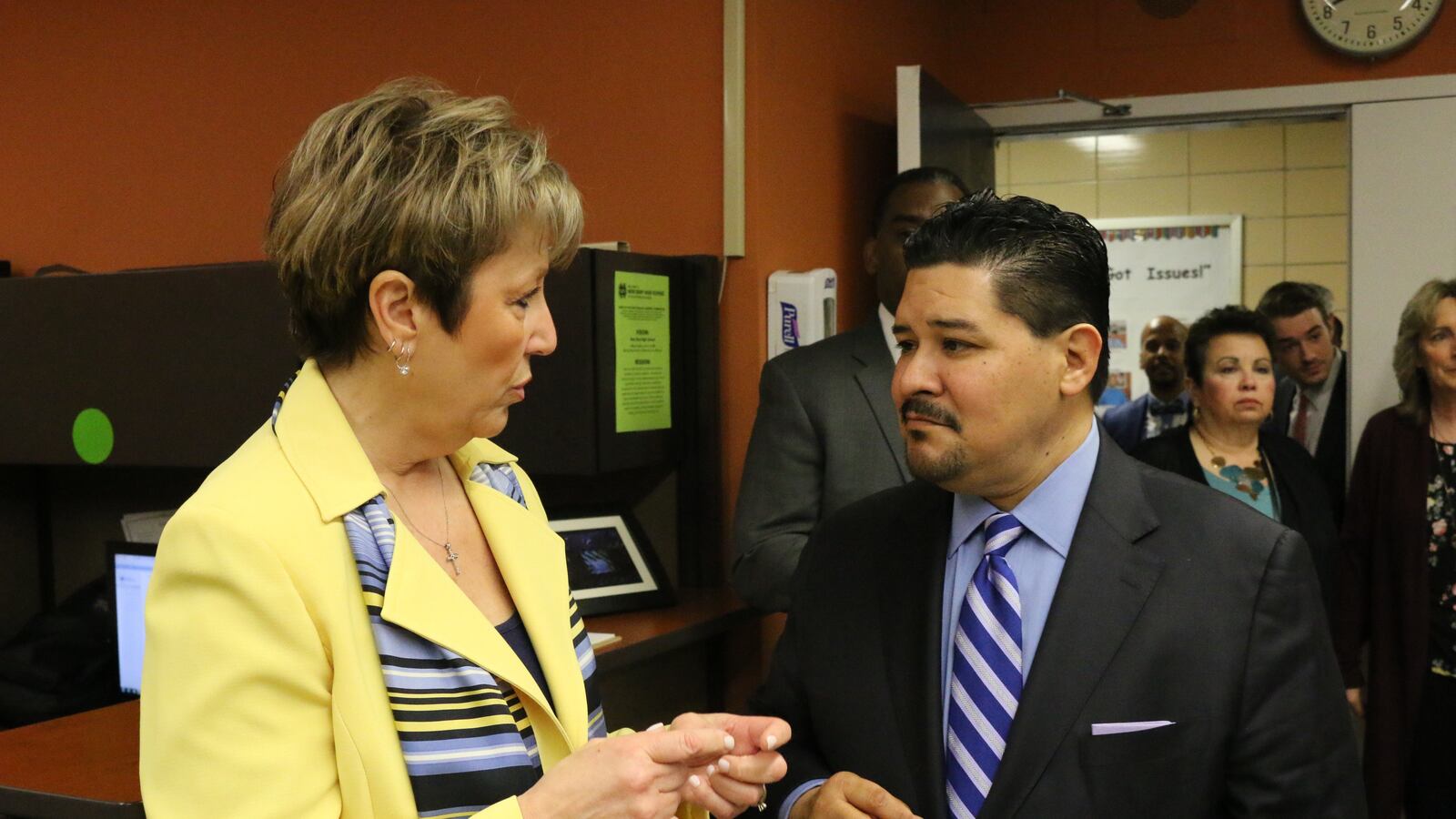Principals across New York City already complain about being buried in mounds of paperwork, compliance items, and mandates from their superiors.
So at first glance, it may sound like bad news that a system shake-up announced by Chancellor Richard Carranza on Wednesday centers on adding another layer of bureaucracy to the system’s management.
But instead, the chancellor’s plan to add nine executive superintendents is being met with cautious optimism from some principals and school advocates, who say the new structure could provide a clear point person to contact when they need support. It may also streamline communication between management and principals, cutting down on the amount of paperwork principals are required to complete, they say.
“They are making sure that those lines are clear, that the principals knows where they’re going to get their support,” said Mark Cannizzaro, the head of the city’s principal’s union. “When it comes to being burdened with paperwork and bureaucracy, my view is that it should be reducing that.”
At the core of Carranza’s plan is an effort to bring together two entities that have been operating separately for several years: superintendents and Field Support Centers. The superintendents are tasked with overseeing principals and shaping instruction, while the support centers provide logistical help to schools in areas like teacher training or budgeting.
The problem for some principals, however, has been that it is not always clear who is charge or where to turn for assistance. For instance, while principals are supposed to work with superintendents to improve instruction, the resources to do that are governed by the support centers — requiring two autonomous entities to work together.
“You really feel as if you’re dealing with two sets of divorced parents,” said Ari Hoogenboom, principal of Abraham Lincoln High School in Brooklyn. They want you “to succeed,” he says, “but their notions of what will make you successful and happy are different.”
Hoogenboom said putting the two entities under the single umbrella of an executive superintendent may help stem some of the confusion. (He likened the role to that of a marriage counselor.)
Edgar Rodriguez, principal of the Academy for Careers in Television and Film, said that he is also encouraged by the streamlined structure. “I will say for myself and for many of my colleagues, one of the main challenges has been a clear delineation of responsibility between those two entities,” he said.
Under the old system, he said, he would often get two sets of compliance items from the Field Support Centers and the superintendent. He remembers thinking, “I just answered this question for so-and-so, how is that this information hasn’t gotten to the right place?”
The city’s current system was crafted by former Chancellor Carmen Fariña, who wanted to give more power to superintendents, who could be her “eyes and ears,” in her words. Her systemic shifts came after the previous mayor, Michael Bloomberg, sought to give principal’s maximal autonomy.
While some critics complained about Bloomberg’s governance, which they said lacked support for struggling principals, others thought Fariña’s management style took too much power away from principals on the frontlines and bordered on micromanagement. In an account of one early meeting, two principals complained that their newly-empowered superintendents had ushered them into a meeting with “random speakers” including Miss New York, who spoke with them about “baton twirling.”
Carranza’s system may be seen as doubling down on Fariña’s approach, by giving power to another set of higher-level superintendents, who will make at least $190,000 each, costing the city an additional $2 million in central-office costs. But Cannizzaro says the structural change is not necessarily a sign of a larger philosophical shift.
“I don’t see this structure as dictating, one way or another, what the philosophy is going to be,” Cannizzaro said. He noted that while the plan looks good on paper, it will be crucial to see how it is implemented over the coming months.
The reorganization also left some leaders of private groups that manage smaller networks of public schools — such as Urban Assembly and New Visions — encouraged.
Former Chancellor Fariña wanted to shrink the role of those networks, which were favored by Mayor Bloomberg and were designed to allow groups of schools to share ideas and best practices. In the past, networks were supervised by an overlapping patchwork of superintendents. Carranza’s reorganization, by contrast, creates a new superintendent position to oversee just those networks.
“We feel embraced by this structure,” said Kristin Kearns-Jordan, CEO of the Urban Assembly network, which manages 21 New York City public schools. “It signals good support for our work.”
Josh Starr, a former schools superintendent in Connecticut and Maryland who is currently the CEO of PDK International, an association for educators, said it is not unusual for new district leaders to make big structural changes when they take office to put their own imprint on schools.
But imposing a new supervision structure on a massive system of 1,800 schools won’t come without challenges. Starr said Carranza will need to publicly communicate a concrete theory about how the new executive superintendents will improve student learning, and how this work will be evaluated.
“Rich is going to have to be very, very clear about what that work looks like and what his expectations are and what support [school supervisors] are going to get,” Starr said. Otherwise, “Do you just create layers of bureaucracy?”
Another challenge will be finding sufficient talent to fill the new superintendent positions, given the many scores of schools serving thousands of students — and uncertainty about whether the roles will last beyond the remainder of Mayor Bill de Blasio’s three years in office.
Still, Starr is optimistic. “Rich is known out there as one of the good guys and he has a strong network and a lot of people want to work for him.”

